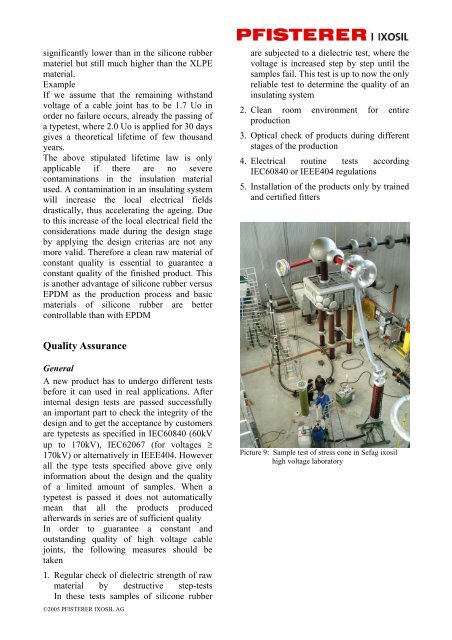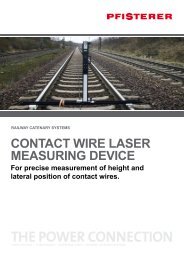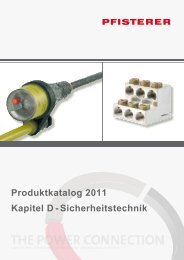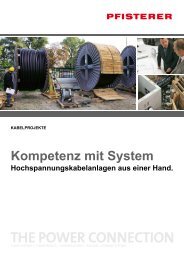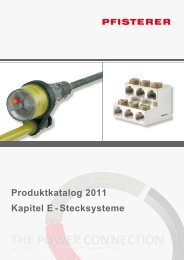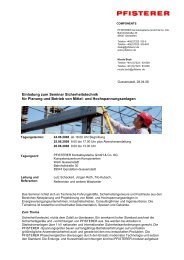Jointing of High Voltage Cable Systems - Pfisterer
Jointing of High Voltage Cable Systems - Pfisterer
Jointing of High Voltage Cable Systems - Pfisterer
You also want an ePaper? Increase the reach of your titles
YUMPU automatically turns print PDFs into web optimized ePapers that Google loves.
significantly lower than in the silicone rubber<br />
materiel but still much higher than the XLPE<br />
material.<br />
Example<br />
If we assume that the remaining withstand<br />
voltage <strong>of</strong> a cable joint has to be 1.7 Uo in<br />
order no failure occurs, already the passing <strong>of</strong><br />
a typetest, where 2.0 Uo is applied for 30 days<br />
gives a theoretical lifetime <strong>of</strong> few thousand<br />
years.<br />
The above stipulated lifetime law is only<br />
applicable if there are no severe<br />
contaminations in the insulation material<br />
used. A contamination in an insulating system<br />
will increase the local electrical fields<br />
drastically, thus accelerating the ageing. Due<br />
to this increase <strong>of</strong> the local electrical field the<br />
considerations made during the design stage<br />
by applying the design criterias are not any<br />
more valid. Therefore a clean raw material <strong>of</strong><br />
constant quality is essential to guarantee a<br />
constant quality <strong>of</strong> the finished product. This<br />
is another advantage <strong>of</strong> silicone rubber versus<br />
EPDM as the production process and basic<br />
materials <strong>of</strong> silicone rubber are better<br />
controllable than with EPDM<br />
are subjected to a dielectric test, where the<br />
voltage is increased step by step until the<br />
samples fail. This test is up to now the only<br />
reliable test to determine the quality <strong>of</strong> an<br />
insulating system<br />
2. Clean room environment for entire<br />
production<br />
3. Optical check <strong>of</strong> products during different<br />
stages <strong>of</strong> the production<br />
4. Electrical routine tests according<br />
IEC60840 or IEEE404 regulations<br />
5. Installation <strong>of</strong> the products only by trained<br />
and certified fitters<br />
Quality Assurance<br />
General<br />
A new product has to undergo different tests<br />
before it can used in real applications. After<br />
internal design tests are passed successfully<br />
an important part to check the integrity <strong>of</strong> the<br />
design and to get the acceptance by customers<br />
are typetests as specified in IEC60840 (60kV<br />
up to 170kV), IEC62067 (for voltages ≥<br />
170kV) or alternatively in IEEE404. However<br />
all the type tests specified above give only<br />
information about the design and the quality<br />
<strong>of</strong> a limited amount <strong>of</strong> samples. When a<br />
typetest is passed it does not automatically<br />
mean that all the products produced<br />
afterwards in series are <strong>of</strong> sufficient quality<br />
In order to guarantee a constant and<br />
outstanding quality <strong>of</strong> high voltage cable<br />
joints, the following measures should be<br />
taken<br />
1. Regular check <strong>of</strong> dielectric strength <strong>of</strong> raw<br />
material by destructive step-tests<br />
In these tests samples <strong>of</strong> silicone rubber<br />
©2005 PFISTERER IXOSIL AG<br />
Picture 9: Sample test <strong>of</strong> stress cone in Sefag ixosil<br />
high voltage laboratory


